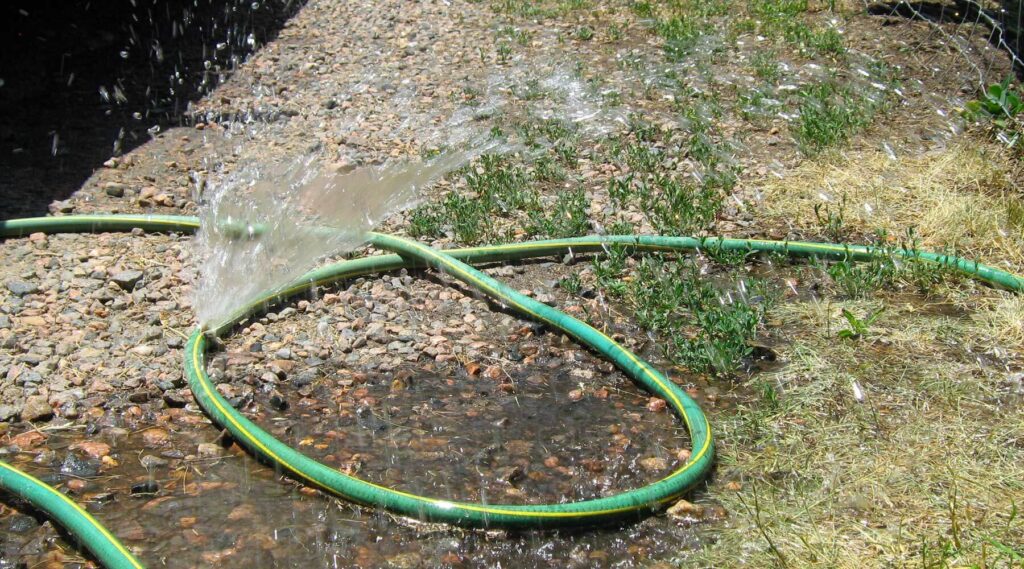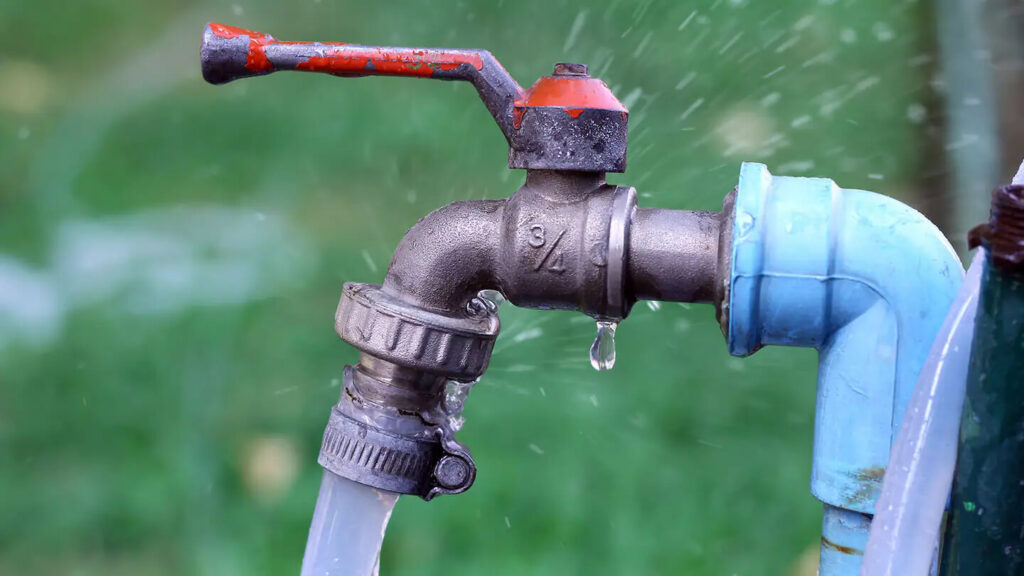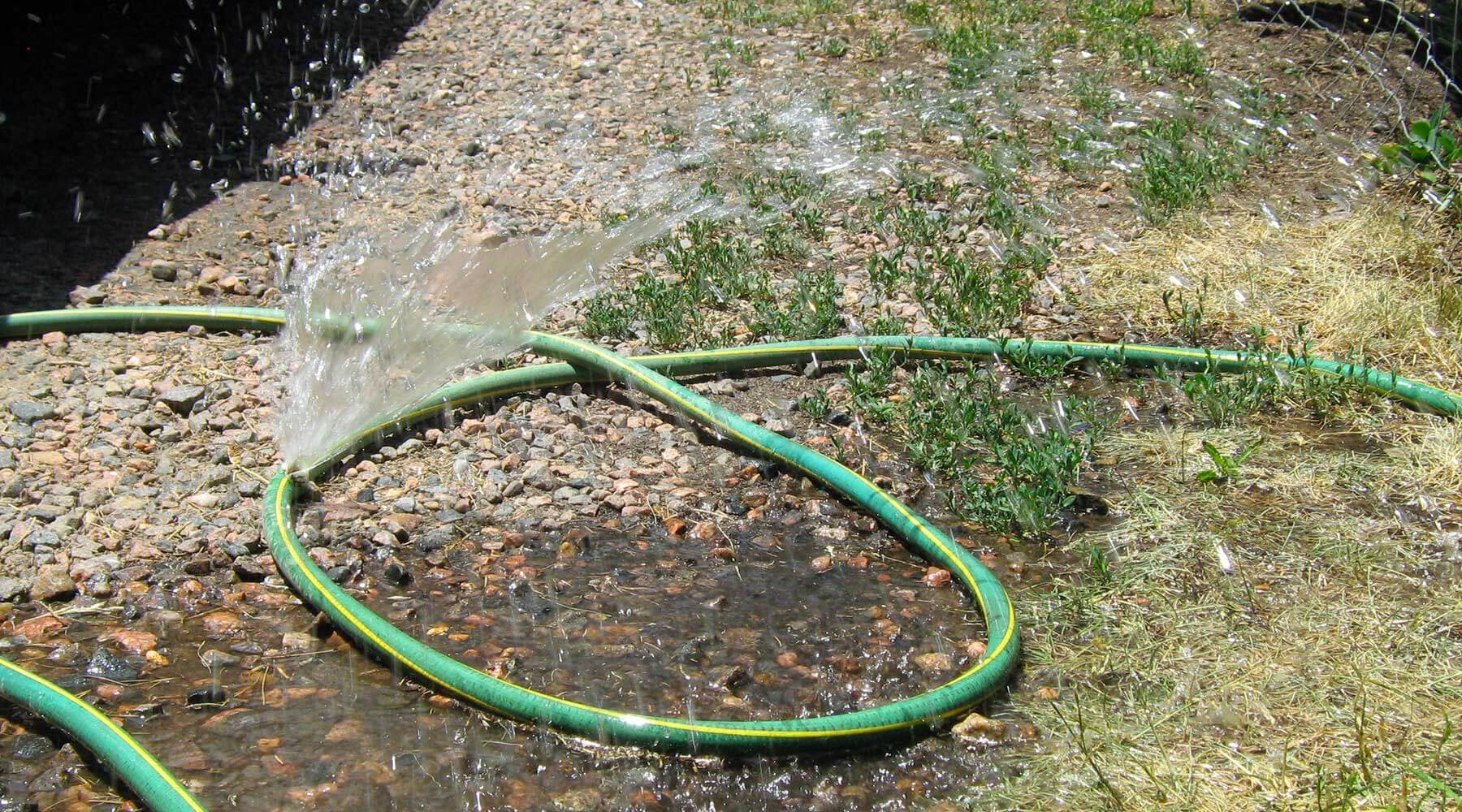Hey there, fellow green thumbs! Ever found yourself all set for a refreshing watering session in your backyard oasis, only to be greeted by a leaky garden hose? Frustrating, right? Well, fear not! We’re diving into the nitty-gritty of fixing those pesky leaks with quick and effective solutions. After all, a garden hose resembling a leaky sieve is no good for anyone, especially your precious plants.
The Garden Hose Conundrum

Picture this: You’re in the midst of giving your garden a good soak, and suddenly, you notice water spurting out from unexpected places in your hose. What gives? Leaky hoses are like the party crashers of your garden fiesta, threatening to dampen the mood – pun intended. Before you start contemplating if your plants secretly signed up for a water park adventure, let’s unravel the mystery behind these leaks.
Why Do Hoses Leak?
Hoses, just like any hero with a chink in their armor, can spring leaks for various reasons. Wear and tear from constant use, kinks and twists that compromise the hose’s integrity, or even the occasional nibble from a mischievous backyard critter – all potential culprits. But worry not, we’ve got your back with quick fixes that’ll have your hose back in action in no time.
Unveiling the Purpose
Now, you might wonder, why bother with this guide? Well, besides the obvious – dry plants and a soggy lawn aren’t a sight for sore eyes – having a leak-free garden hose is essential for efficiency. Who wants to waste water, right? Plus, think about it, if your hose leaks more than a gossip session in Brooklyn, New York, you’re not just wasting water but also hard-earned money.
Identifying the Leak
Visual Inspection: Spot the Culprit
Before you jump into fixing mode, it’s crucial to play detective and identify where that sneaky leak is hiding. A visual inspection is your first line of defense.
| Steps | Details |
| 1. Check for visible holes or cracks | Grab your detective glasses and examine the hose closely. Any obvious holes or cracks? Mark those suspects. |
| 2. Examine hose connections and fittings | Often, leaks sneak through loose connections. Give those fittings a once-over and tighten them if needed. |
Performing a Water Test: Let the Water Flow
If your hose is playing hard to get, it’s time for a water test. Turn on the tap and let’s track down that leak.
| Steps | Details |
| 1. Turn on the water to identify the leak location | Slow and steady wins the race. Pay attention to any sudden spurts or leaks – that’s where the issue lies. |
| 2. Listen for hissing sounds or feel for water leaks | Engage your sense of hearing and touch. Hissing sounds or wet spots are clues leading you to the leak source. |
Now that you’ve pinpointed the problem areas, it’s time to gear up and tackle those leaks head-on! But what tools and materials are your trusty sidekicks in this leak-fighting mission? Let’s find out.
Tools and Materials
Necessary Tools for Hose Repair:
- Hose Repair Kit: Your all-in-one solution. It typically includes patches and adhesive to cover those pesky holes.
- Hose Clamp or Zip Ties: Perfect for securing loose connections with a firm grip.
- Utility Knife or Scissors: Precision is key when cutting and shaping materials.
- Screwdriver or Pliers: For tightening fittings and ensuring a snug connection.
Optional Materials for More Permanent Fixes:
- Hose Mender: Ideal for replacing damaged sections, providing a durable and lasting solution.
- Epoxy Putty: A go-to for sealing larger cracks or holes permanently.
- Replacement Fittings: When the old ones just won’t cut it, swapping them out ensures a leak-free future.
Armed with these tools and materials, you’re ready to tackle those leaks head-on. Stay tuned for quick and effective solutions to revive your garden hose!
Quick Solutions: Patching Up the Leaks
So, you’ve identified the leaky culprits in your garden hose – it’s time to roll up those sleeves and get down to business. Quick solutions are the name of the game, and we’ve got a few tricks up our gardening gloves.
Patching Small Holes or Cracks
Using a Hose Repair Kit:
- Step-by-Step Application:
- Clean the damaged area to ensure proper adhesion.
- Apply the patch from the repair kit, covering the hole or crack thoroughly.
- Press down firmly and let it set as per the kit instructions.
- Tips for a Secure Patch:
- Ensure the hose is dry before applying the patch.
- Smooth out any air bubbles for a tight seal.
- Don’t rush – let the patch set completely before testing the hose.
Alternative Methods with Household Items:
- Duct Tape or Electrical Tape:
- Wrap the damaged area tightly with tape, covering the hole.
- Make multiple layers for added strength.
- Temporary fix, but effective in a pinch.
- Rubber Patches and Glue:
- Cut a rubber piece slightly larger than the hole.
- Apply glue on both the patch and the damaged area.
- Press them together firmly and let it dry.
Remember, these quick fixes are your garden hose’s band-aids – they’ll get you through the season, but a more permanent solution might be in order for long-term hose health.
Securing Loose Connections
- Tightening Hose Connections:
- Use a wrench to ensure all connections are snug.
- Check for any visible gaps or irregularities.
- Adding a Hose Clamp or Zip Ties:
- Slide a hose clamp over the connection or use zip ties for a makeshift clamp.
- Tighten until secure, preventing water from sneaking out.
Temporary Fixes for Emergencies
- Wrapping with Cloth and Tape:
- Wrap a piece of cloth tightly around the leak.
- Secure with duct tape for a temporary seal.
- Rubber Band or Zip Tie Seal:
- Place a rubber band or zip tie around the leak, applying pressure.
- It won’t last forever but can be a quick fix in a garden crisis.
With these quick solutions, your leaky hose is well on its way to redemption. But what about more permanent fixes to ensure your garden watering routine stays hassle-free? Stay tuned for the next level of hose restoration!
More Permanent Solutions: Nipping Leaks in the Bud

So, you’ve handled those quick fixes like a seasoned gardener, but what if you’re aiming for a more lasting solution? It’s time to upgrade your hose repair game with more permanent fixes that’ll stand the test of time.
Using a Hose Mender
- Steps for Cutting and Replacing the Damaged Section:
- Identify the damaged section and mark it.
- Use a utility knife to cut out the damaged part, creating clean edges.
- Slide the hose mender onto the hose, ensuring a snug fit.
- Tighten the hose clamps on both sides for a secure connection.
- Ensuring a Watertight Seal with Proper Installation:
- Apply a thin layer of soapy water to the mended area.
- Turn on the water – if bubbles appear, the seal isn’t airtight.
- Tighten the clamps further if needed until no bubbles are visible.
Epoxy Putty Application
- Preparing the Hose Surface:
- Clean the damaged area thoroughly to remove dirt and debris.
- Roughen the surface slightly with sandpaper for better adhesion.
- Applying and Molding the Epoxy Putty:
- Mix the epoxy putty according to the manufacturer’s instructions.
- Apply the putty over the damaged area, molding it to cover the entire surface.
- Smooth out the putty for a clean finish.
- Allowing Sufficient Curing Time:
- Let the epoxy putty cure completely before using the hose.
- Follow the recommended curing time to ensure a strong and durable bond.
Replacing Damaged Fittings
- Identifying the Damaged Fitting:
- Check for visible cracks or signs of wear on hose fittings.
- Unscrew and inspect each fitting for any abnormalities.
- Choosing and Installing a New Fitting:
- Select a replacement fitting suitable for your hose type.
- Apply plumber’s tape to the threads for a secure seal.
- Screw on the new fitting tightly using pliers.
- Ensuring Proper Alignment for Leak Prevention:
- Align the new fitting correctly to avoid stress on the hose.
- Hand-tighten first and then use pliers for that extra snugness.
With these more permanent solutions, your garden hose is geared up for a leak-free future. But remember, preventive maintenance is the secret weapon for a hose that stands the test of time. Let’s dive into how you can keep those leaks at bay with regular TLC.
Preventive Maintenance
Regular Inspections: Keeping an Eagle Eye
- Checking for Wear and Tear:
- Inspect your hose regularly for signs of wear such as cracks, bulges, or soft spots.
- Replace any worn-out sections before they turn into leaks.
- Addressing Minor Issues Before They Become Major Leaks:
- Don’t underestimate small leaks – fix them promptly to prevent escalation.
- Those tiny drips can snowball into a watery catastrophe if ignored.
Proper Storage During Winter Months
- Draining Water to Prevent Freezing:
- Before winter sets in, ensure all water is drained from the hose.
- Store it coiled up to prevent kinks and cracks caused by freezing water.
- Storing Hoses in a Cool, Dry Place:
- Keep your hoses away from direct sunlight when not in use.
- Opt for a cool, dry storage spot to extend their lifespan.
Congratulations, you’ve now mastered the art of repairing and maintaining your garden hose. Your plants are sure to thank you for the uninterrupted hydration!
Wrapping it Up
As you bid farewell to the land of leaks, remember that a well-maintained hose is the backbone of a flourishing garden. So, here’s to a leak-free, hassle-free watering experience. Go ahead, turn that tap, and let the garden thrive! Happy gardening!
Frequently Asked Questions (FAQ)
Q1: How do I identify a leak in my garden hose?
A: Conduct a visual inspection for visible holes or cracks. Alternatively, perform a water test by turning on the water and looking for leaks or listening for hissing sounds.
Q2: What tools do I need for hose repair?
A: Essential tools include a hose repair kit, hose clamp or zip ties, utility knife or scissors, and a screwdriver or pliers. Optional materials for more permanent fixes may include a hose mender, epoxy putty, or replacement fittings.
Q3: Can I use household items for a quick hose patch?
A: Yes, duct tape or electrical tape can be used as a temporary fix. Rubber patches and glue are also effective for quick solutions.
Q4: How do I secure loose hose connections?
A: Tighten hose connections using a wrench and consider adding a hose clamp or zip ties for extra support.
Q5: What are more permanent solutions for hose repair?
A: For lasting fixes, consider using a hose mender, applying epoxy putty, or replacing damaged fittings.
Q6: How do I prevent hose leaks through maintenance?
A: Regularly inspect your hose for wear and tear, addressing minor issues promptly. Properly store hoses during winter, draining water to prevent freezing.
Q7: How can I check if a hose mender is installed correctly?
A: Apply a thin layer of soapy water to the mended area and turn on the water. Bubbles indicate air leaks; tighten clamps until no bubbles are visible.
Q8: Can I use a hose with a temporary fix permanently?
A: Temporary fixes are designed for short-term solutions. For a lasting repair, consider more permanent solutions like a hose mender or epoxy putty.
Q9: How often should I inspect my garden hose for potential leaks?
A: Regularly inspect your hose, especially before the watering season. Address any visible issues promptly to prevent leaks.
Q10: Can I leave my garden hose exposed to sunlight?
A: It’s recommended to store hoses away from direct sunlight when not in use. Prolonged exposure can lead to wear and deterioration.


